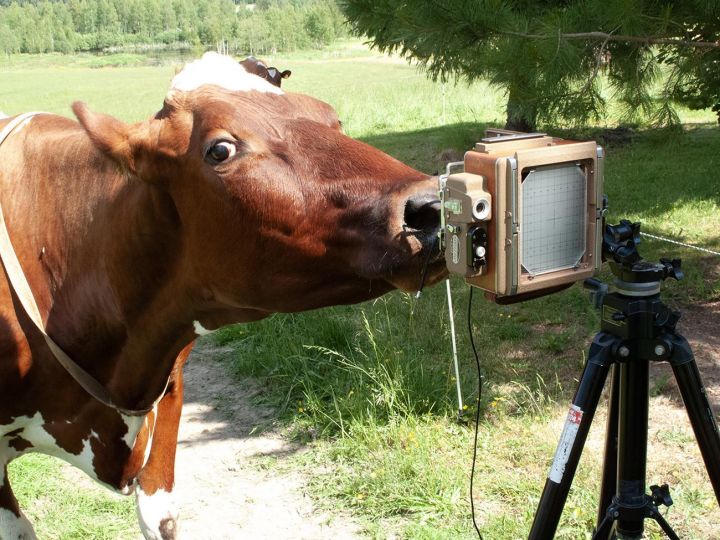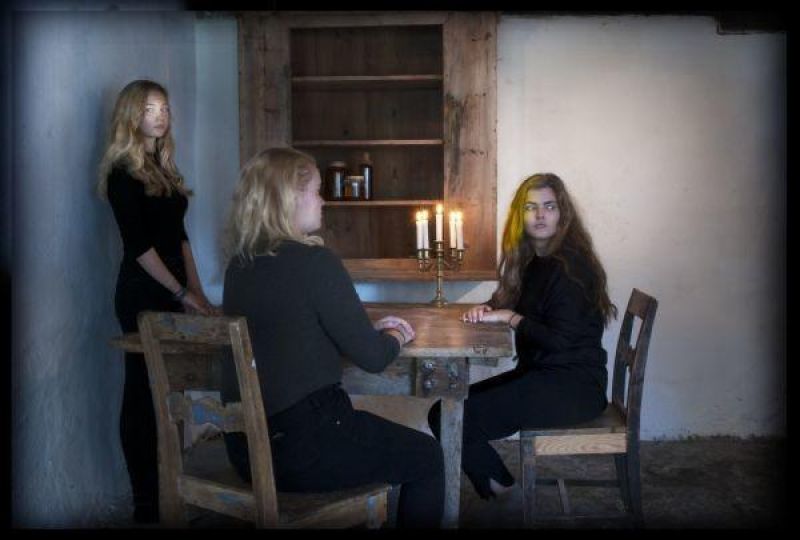The work of the American photographer is exhibited at the Jeu de Paume in Paris. Moving variations around the faces of misery in the 30s-40s in the United States.
There is this icon first. A world-famous image of this beleaguered mother, two children huddling around her, her gaze absorbed in deep thought and the folds on the skin of her face that expresses all the gravity of this thought, all the pain and all the misfortune that she must put up with her seven dependent children and her condition as a miserable farmer. There is this icon – which is unsurprisingly the poster of the exhibition – and there’s all the rest of a job that’s forged in the same pain and the same refrain of social misery.
One of the first photographs that welcomes the visitor in this exhibition is that of an old a man with a hat leaning against the counter of a bar waiting to be served from a soup kitchen. Not far from there, is an American migrant who walks on the road, a bundle on his back… Dorothea Lange captures the broken lives, faces defeated by the weight of a distress insurmountable and total.
Witness what could be another icon: a lonely man sitting on a step at the edge of the street. His face plunged between his legs as if he wanted to hide from the rest of the world, to have the night in full day. Beside him, an inverted wheelbarrow, the object has no more utility and is the symbol of the scourge of unemployment where people like this man lose their usefulness social, and wander haggard, desperately seeking a place in this world where there is no room for them.
On the road
Other faces, other distress. For example, an American mother who knows famine and exclusion. She testifies and Dorothea Lange also records her words. She talks about selling their car to buy something to eat and that now, she is stuck and regrets because she can not leave this area, except on foot. Dorothea Lange is a specialist of this kind of shooting: migrants, alone or with family, sailing on America’s great highways of the 30s. All are looking for a more welcoming and benevolent place, especially a place where there is still employment.
This road trip reminiscent of On the road of Kerouac – is sometimes sadly ironic. On an image of Lange we see two men treading the asphalt when, next to them, a huge sign promotes travel by train. On another Dorothea Lange photograph is also interested in a sign that says, “There’s no way like the American way” while the environment is a wasteland ; funny picture of American contradictions that does not know what to do with this misery.
Poverty of the countryside
If there is irony and sadness, there is first intense humanity emerging from the photographs of Dorothea Lange. The photographer manages to seize all the grave and dignified looks of a hungry family, of an idle wanderer. Incredibly talented, the photographer took part in many assignments, and in particular those of the FSA (Farm Security Administration) from 1936 to 1938 and that the Jeu de Paume showcases very well offering to look directly at the contact sheets of the work about the poverty of the countryside in the midst of an economic crisis after the stock market crash of 1929. A myriad of clichés perfectly well done and the feeling that Dorothea Lange is an exceptional photographer who does not miss any picture. So that’s certainly why she was chosen by the US administration or by famous magazines to document crucial and social events.
Japan
So, she was assigned by Fortune magazine to make images of the Kaiser shipyard in Richmond in 1944. from that came moving photographs where we see the dock workers go to work or a miserable worker forced to sleep outdoor on the floor on the corner of a quay.
Two years before, in the middle of World War II, Lange is mandated by the War Relocation Authority which asks her to report on the Japanese in the United States then locked up in camps while America is in full war against their country. Lange is deeply moved by what she saw and applied herself to highlight all the chilling absurdity of such a situation. She takes for example in photography of children who have labels around their necks and who do undeniably make us think of the yellow star that the Jews were wearing in Europe.
The photographer was pained by this experience and especially by the fact that her images were classified as “military archives” and were not shown to the public until 2006. Thus the museum of the Jeu de Paume gives back the memory of this tragic episode in particular these images in a video projection that allows to watch all of this work.
The last part of the exhibition is dedicated to the work Dorothea Lange did in the American courts where she made a point of capturing, here again, all the distress contained in eminently tragic moments when the fate of an accused is suspended on the decision of a judge, where the assigned lawyer tries to defend the indefensible and all that with all the misery in the world.
With Dorothea Lange at least it is brought to light and dignified, as if the Photographer took pride in giving back the grace of the damaged faces.
Jean-Baptiste Gauvin
















